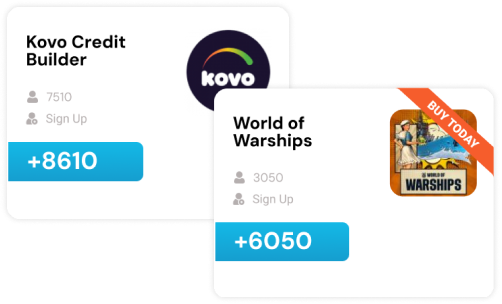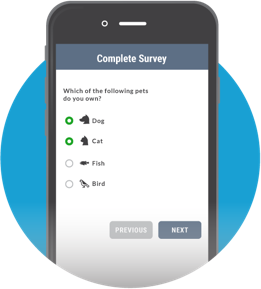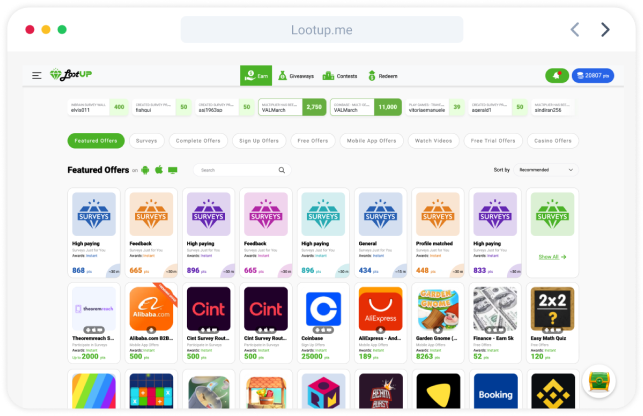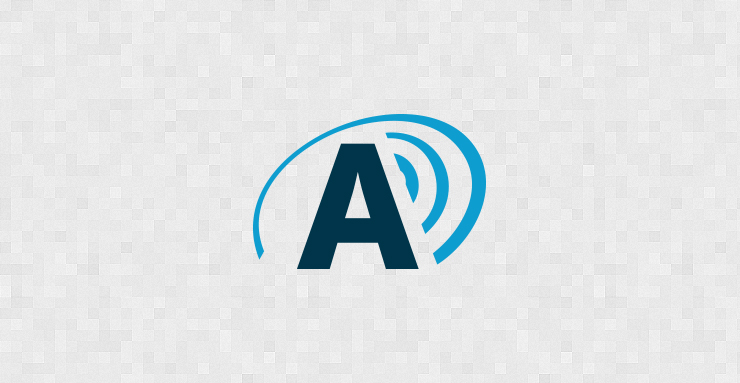
Incentivized traffic, also known as rewarded traffic, can be a powerful user acquisition channel, delivering higher engagement rates and conversions for advertisers across industries such as finance, gaming, apps, gambling, AI, e-commerce/retail, market research, subscriptions, health, telecom, and more.
While incentivized and rewarded traffic are often used interchangeably, some differences lie in the ad units deployed and the specific user engagement they drive, making the distinction important to understand.
What is Incentivized Traffic?
Incentivized traffic refers to users who are driven to take specific actions, such as signing up for a service, completing a survey, or making a purchase, in exchange for a reward. This reward can be anything from discounts, free products, or in-app currency to more tangible rewards like gift cards. Advertisers use this user acquisition (UA) marketing channel to attract users quickly by offering incentives that encourage immediate engagement with their product or service, ultimately drive return on ad spend (ROAS).
Over the years, incentivized traffic has occasionally faced criticism due to concerns about the quality of user engagement. However, it’s important to recognize that this traffic source has often helped advertisers achieve specific objectives at critical moments. For example, during the early days of app marketing, incent traffic was commonly used to drive a high volume of app installs. This rapid user growth strategy aimed to boost app rankings in the charts, which in turn generated more organic traffic.
At that time, incentivized advertising was highly effective for achieving its intended goal: to increase visibility and downloads. However, as app store optimization (ASO) algorithms evolved, it became clear that these low-cost installs often resulted in lower user engagement rates. Since the primary goal at that point was rapid growth rather than sustained user activity, this trade-off was acceptable.
Today, incentivized traffic has evolved significantly. The focus has shifted towards acquiring high-quality, engaged users, aligning with the goals of more sophisticated advertiser campaigns. Generally, most of these campaigns are also performance-based, where advertisers only pay for specified actions. As a result, this rewarded UA channel now plays a more strategic role in helping advertisers attract the right users who are likely to remain active and engaged over the long term.
What is Rewarded Traffic?
Rewarded traffic is often used interchangeably with incentivized traffic, as both involve users taking specific actions in exchange for a reward. However, if we get more nuanced, rewarded traffic often refers to ad units like rewarded video. In a typical rewarded video ad, users engage with a short video—commonly an app trailer—in exchange for a small reward, such as extra lives in a game. In this case, the reward is granted solely for watching the video, and the user may optionally choose to install the app afterward based on their interest.
For advertisers using rewarded video, they often operate on a cost per install (CPI) basis, where the installs are driven more by user interest rather than direct incentives. This results in installs that more closely resemble typical paid traffic sources, which has been a major driver for the popularity of this ad format. It’s also worth noting that rewarded video tends to work particularly well for mobile gaming advertisers.
While rewarded video is a highly successful format, other types of rewarded traffic include offerwalls, survey walls, and rewards programs. For these formats, the campaign structure is critical to the advertiser’s success. However, it’s also important to recognize that the quality of rewarded traffic is influenced by more than just the campaign mechanics. How users are sourced, the targeting methods, and the publisher or ad platform’s ability to deliver the right user to the right ad—while minimizing fraud—are crucial factors in determining traffic quality.
Ultimately, the key difference between rewarded and incentivized traffic lies not just in the ad format itself but in how these campaigns are structured. Rewarded video ad campaigns are distinct from formats like offerwalls and rewards programs, but the targeting and sourcing strategies play an equally important role in driving meaningful results for advertisers.
Rewarded Ad Units & Successful Campaigns
Choosing the right type of ad campaign for each rewarded ad unit is crucial for maximizing ROAS (return on ad spend) for advertisers. Below is a brief overview of different rewarded ad units and incentivized traffic sources, and how campaigns should be structured to drive success:
Offerwalls
Offerwalls are a popular type of rewarded ad unit deployed across publisher apps, websites, and games. They allow users to browse a selection of offers and choose the ones they are most interested in, earning rewards such as in-app currency for their participation.
Offerwall ad campaigns are typically structured using a cost per action (CPA) model. Today, cost per engagement (CPE) and multi-reward CPE campaigns have become the most prominent campaign type due to their ability to generate high and sustained user engagement, delivering significant ROAS for advertisers.

Survey Walls
Survey walls operate similarly to offerwalls but focus on market research. They allow users to access a wall of targeted surveys within publisher apps and websites. As users complete surveys, they are rewarded with in-app currency or gift cards.
Survey wall campaigns typically reward users only for surveys they successfully complete, not those they simply begin. Given the growing demand for market research, this strategy has gained popularity, especially for brand research initiatives.

Rewards Programs
Rewards programs provide advertisers with access to first-party users through loyalty initiatives. These programs work similarly to well-known loyalty systems, such as McDonald’s, but are used to promote other brands. They connect advertisers with targeted users, rewarding them for their time and engagement.
Similar to offerwalls, rewards programs typically employ a performance marketing model like CPE and multi-reward CPE campaigns, aiming to drive ROAS. Since these users are first-party, rewards programs offer more opportunities for customized ad campaigns, allowing for greater personalization and targeting precision.

Rewarded Video
Rewarded video is another type of rewarded ad unit, commonly deployed across mobile gaming platforms. Users watch short video ads, often app trailers, in exchange for small rewards, such as extra lives in a game.
This ad unit works best with a cost per install (CPI) model and is particularly effective for mobile gaming advertisers, where user interest and engagement levels are generally high.

Rewarded and Incentivized Traffic—Two Sides of the Same Coin
While rewarded and incentivized traffic can be segmented by certain types of ad units and performance models, they ultimately serve the same purpose: driving user acquisition through strategic rewards. Both approaches are built on the idea of offering something of value in exchange for user action, whether that’s watching a video, completing a survey, or engaging with a loyalty program.
The key takeaway is that the real difference between these two lies in the campaign structure, rather than in the traffic type itself. Advertisers seeking high-quality, engaged users can find success with any of these rewarded or incentivized traffic sources by ensuring that their campaign is tailored to their specific goals.
As user acquisition channels continue to evolve, rewarded and incentivized traffic will remain a powerful marketing channel for advertisers across industries. By understanding the nuances of each and aligning them with the right performance-based models, advertisers can acquire loyal users, maximize engagement, and ultimately drive ROAS.
Interested in learning more about how rewarded user acquisition can help drive ROAS for your brand? Contact us.












Add comment